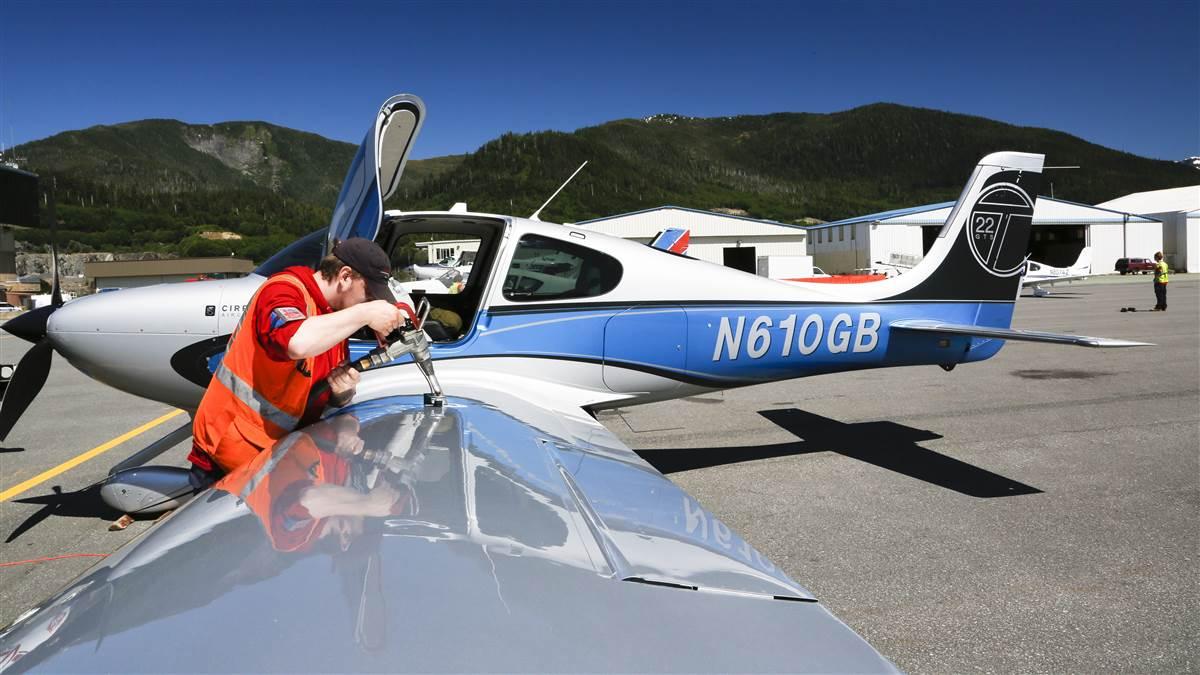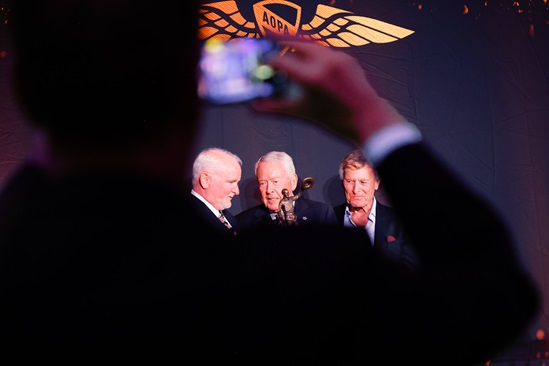FAA approves unleaded fuel for piston fleet
Solution is ‘vital’ to future of GA, says Baker

The move was hailed by the industry as a major step in the transition to an unleaded GA future. The FAA’s approval of the use of G100UL fuel in all piston aircraft satisfies a longstanding goal of finding a solution that can be used for the entire GA piston fleet.
“I’m proud of GAMI, the industry team, and the FAA for persevering over the long term and getting a fuel that the FAA has recognized as a viable alternative to low lead,” AOPA President Mark Baker said. “It is vital that we find solutions to what has been plaguing general aviation since the seventies. It’s certainly the biggest issue I have dealt with in my time at AOPA.”
“This is a big deal,” Baker added, “but there is a lot of work yet to be done.”
See “GAMI Gets Fleetwide STC,” p. 85 for more details.
aopa.org/100UL
What is the status of MOSAIC?
By Murray Huling, AOPA vice president, regulatory affairs
In July, Brazil’s aviation authority completed regulatory changes expanding light sport aircraft (LSA) authorizations that allow up to four seats, 185 knots, 61-knot stall, variable pitch propellers, takeoff weight of 1,361 kg (3,000 pounds), and piston or electric engines. It was interesting see the speed at which the Brazilian authority developed and implemented these changes. The question to ask now is, where is the FAA on MOSAIC? The Modernization of Special Airworthiness Certification (MOSAIC) has been in the works for years.
At EAA AirVenture, excitement was in the air based on information provided by the FAA, creating a perception that MOSAIC was moving along through the process with little delay. We are hearing now that there are internal discussions between FAA organizations on what aircraft parameters should and shouldn’t be included in MOSAIC; these back-and-forth discussions can lead to great decisions, but also hinder progress because of analysis paralysis. The FAA needs to get MOSAIC on course and keep it on course.
LSA’s have proven safe, and they afford those who may not have considered flying and those who wish to continue flying the opportunity to do so. New LSA technologies offer increased situational awareness, aircraft performance monitoring, and other safety features not yet available on certified aircraft. Easing the pathway for additional new technologies—including powerplants—with the proposed MOSAIC changes will benefit a broader group of LSA-eligible aircraft as long as the FAA keeps the currently proposed incorporations in MOSAIC. AOPA will remain focused and keep the pressure on to help keep MOSAIC moving forward with our eye on ensuring the general aviation industries’ proposed changes are incorporated.
On the front lines
Hangar use policies
By Stacey Heaton, AOPA Southern Regional manager
In 2016, the FAA issued a policy addressing expectations of aeronautical and nonaeronautical hangar use at grant obligated airports. The policy is intended to guide sponsors to keep in compliance with federal rules. Tenant reactions to the policy range from not wanting any FAA involvement in hangar use at all to those that believe a hangar should only be for storing aircraft and performing maintenance. Airport sponsors seem to impose policies that range just as widely.
The FAA’s policy allows for storage of aircraft handling equipment and tools used in servicing, maintaining, and repairing your aircraft. The policy allows a sponsor to permit tenants to store incidental nonaeronautical items that do not interfere with aeronautical use; it does not create a right to store nonaeronautical items in hangars. Many in-airport management roles are not aircraft owners, while many aircraft owners don’t know the rules airport sponsors must follow to remain eligible for future grants. If you feel your airport’s hangar use policy needs attention, review your lease and the FAA’s hangar use policy frequently asked questions. Then, start a conversation with your airport management. With open communication, perhaps adjustments can be made.
faa.gov/airports/airport_compliance/hangar_use


